Table of Contents
Introduction
Paris, the capital of France, is often celebrated as the “City of Light,” but it is equally deserving of the title “City of History.” From its ancient beginnings as a Roman settlement to its evolution into a hub of art, culture, and politics, Paris has a rich and complex history that is reflected in its architecture, landmarks, and traditions. The city is a living museum, where every street and building tells a story of a bygone era, offering a unique window into the past. Iconic structures like the Notre-Dame Cathedral, the Louvre Museum, and the Palace of Versailles stand as testaments to the city’s historical grandeur and its pivotal role in shaping the course of European history.
Engaging in historical tours of Paris is essential for anyone looking to gain a deeper understanding of its cultural heritage. These tours provide valuable insights into the events, personalities, and artistic movements that have defined the city over centuries. They allow visitors to experience firsthand the grandeur of French Gothic architecture, the opulence of royal palaces, and the masterpieces of world-renowned artists. Moreover, historical tours help contextualize modern Paris within its rich historical narrative, offering a comprehensive appreciation of how the city has preserved its past while continuing to evolve. Through these explorations, one can truly grasp the significance of Paris as a beacon of history and culture.
Notre-Dame Cathedral
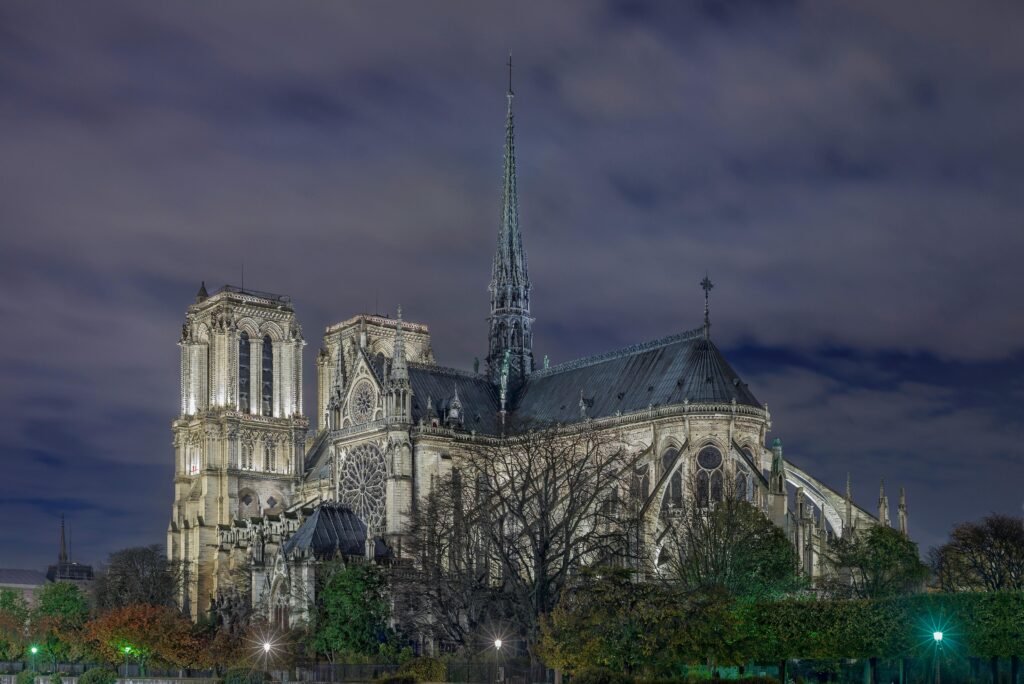
Notre-Dame Cathedral, a masterpiece of French Gothic architecture, stands as one of Paris’s most iconic and historically significant landmarks. Construction began in 1163 and was completed in 1345, reflecting the meticulous craftsmanship and enduring dedication of its builders. The cathedral is renowned for its stunning rose windows, intricate flying buttresses, and menacing gargoyles that have watched over the city for centuries. A symbol of French heritage, Notre-Dame has witnessed numerous historical events, including the coronation of Napoleon Bonaparte and the beatification of Joan of Arc. Despite the devastating fire in 2019, which severely damaged its roof and spire, restoration efforts are underway to restore this architectural marvel to its former glory. Visitors are drawn not only by its architectural splendor but also by its rich history and the serene beauty of its interiors. Guided tours provide deeper insights into its historical significance and the ongoing efforts to preserve this treasured monument.
History and Significance:
- The construction of Notre-Dame Cathedral commenced in 1163 under the auspices of Bishop Maurice de Sully and spanned nearly two centuries, reaching completion in 1345. This lengthy building process underscores the extensive labor, resources, and intricate craftsmanship that were invested into creating this architectural masterpiece. As a quintessential example of French Gothic architecture, Notre-Dame boasts a plethora of distinctive features, including its magnificent rose windows, pointed arches, ribbed vaults, and flying buttresses. These elements not only exemplify the architectural innovations of the time but also highlight the skilled artisanship and engineering prowess that were required to bring such a grand vision to fruition. The cathedral’s towering façade and intricate stonework continue to inspire awe and admiration, drawing millions of visitors from around the world each year.
- Notre-Dame Cathedral holds a revered place in both Parisian and French heritage, serving as a symbol of the nation’s religious, cultural, and historical identity. It has been the backdrop for numerous significant events, from royal ceremonies to revolutionary upheavals. The cathedral gained further international fame through Victor Hugo’s classic novel, “The Hunchback of Notre-Dame,” published in 1831. Hugo’s vivid depiction of the cathedral and its surroundings not only highlighted the building’s architectural grandeur but also sparked a renewed interest in preserving Gothic architecture during a period when such structures were falling into disrepair. The novel’s enduring popularity has cemented Notre-Dame’s status as a cultural icon, intertwining its legacy with the literary and artistic heritage of France. Today, the cathedral stands as a testament to the historical and cultural richness of Paris, embodying the spirit and resilience of the city and its people.
Key Features:
- Notre-Dame Cathedral is celebrated for its remarkable architectural features, each contributing to its status as a pinnacle of French Gothic design. The cathedral’s stunning rose windows are among its most iconic elements, with the three major windows—the west rose, the north rose, and the south rose—dating back to the 13th century. These intricate stained glass windows depict biblical scenes and saints, casting vibrant patterns of light into the cathedral’s interior. Complementing the windows are the intricate flying buttresses, an innovative architectural solution that provides structural support to the cathedral’s walls while allowing for higher ceilings and larger windows. The iconic gargoyles perched along the exterior serve both a functional and decorative purpose, acting as water spouts to protect the stonework from erosion while adding to the cathedral’s mystical and eerie allure.
- The devastating fire of April 15, 2019, caused significant damage to Notre-Dame, particularly to its wooden roof, known as “the forest,” and the 19th-century spire that collapsed during the blaze. Despite the extensive destruction, the resilience and determination to restore this historic monument were immediate and widespread. Extensive restoration efforts have since been underway, involving meticulous research, skilled craftsmanship, and modern technology to ensure that the cathedral is faithfully restored to its former glory. These efforts have included stabilizing the structure, sourcing materials that match the original, and carefully reconstructing damaged elements. The restoration project is not only an architectural endeavor but also a cultural mission, reaffirming Notre-Dame’s significance as a symbol of heritage and continuity for Paris and the world.
Visitor Tips:
- For visitors planning a trip to Notre-Dame Cathedral, timing can greatly enhance the experience. To avoid the large crowds that often gather, especially during peak tourist seasons, it’s advisable to visit early in the morning or later in the afternoon on weekdays. This allows for a more serene and intimate exploration of the cathedral’s interior and exterior, providing better opportunities for contemplation and photography.
- Guided tours offer a deeper understanding of Notre-Dame’s rich history and intricate architecture. These tours are led by knowledgeable guides who provide insights into the cathedral’s construction, its significance in French history, and the stories behind its stunning stained glass windows and stone carvings. While some areas of the cathedral are free to enter, such as the main nave, certain sections, like the towers and crypt, may require tickets for access. Visitors can choose from various tour options depending on their interests and time constraints, ensuring they get the most out of their visit to this iconic Parisian landmark.
The Louvre Museum
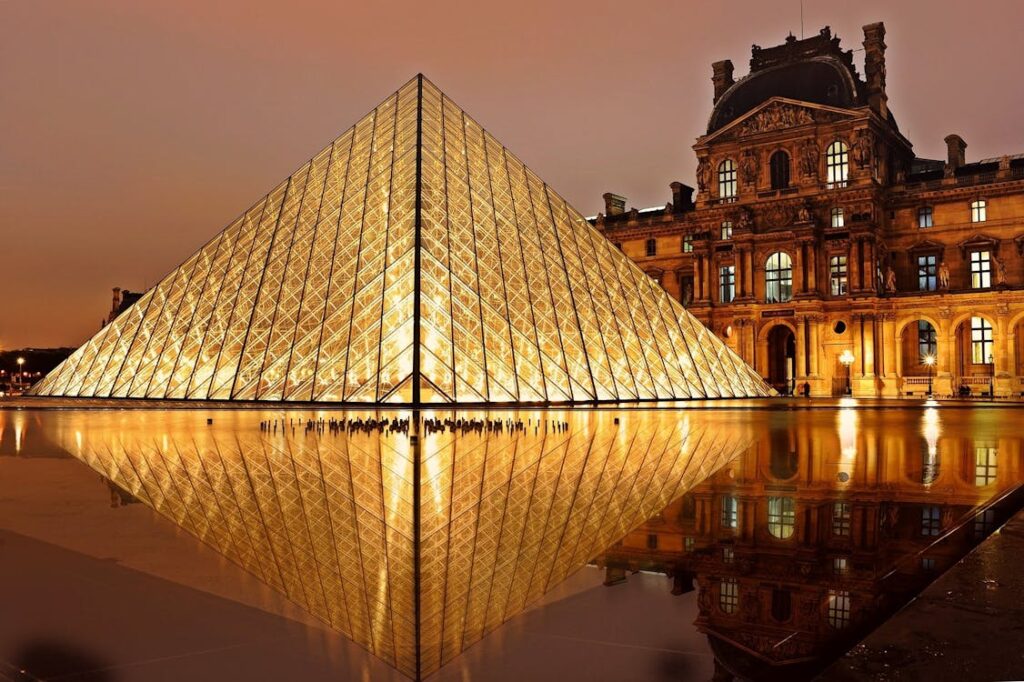
The Louvre Museum, originally a fortress built in the late 12th century by King Philip II, has evolved into one of the world’s largest and most visited art museums. Located on the right bank of the Seine River in Paris, it opened to the public as a museum in 1793 during the French Revolution. The Louvre is renowned for its vast and diverse collection of art and artifacts, spanning from ancient civilizations to the 19th century. Among its most famous exhibits are Leonardo da Vinci’s “Mona Lisa,” the ancient Greek statue “Venus de Milo,” and the sculpture “Winged Victory of Samothrace.” Navigating the Louvre’s extensive galleries can be overwhelming, but the museum offers guided tours and multimedia guides to help visitors explore its treasures and learn about the history and significance of its collections.
Historical Background:
The Louvre Museum’s historical background dates back to the late 12th century when it was initially built as a fortress by King Philip II. Over the centuries, it underwent several transformations, evolving from a medieval stronghold into a royal palace under subsequent French monarchs. It wasn’t until the French Revolution in 1793 that the Louvre was repurposed and opened as a public museum, showcasing a collection of national art treasures. This significant transition marked a pivotal moment in the museum’s history, transforming it from a symbol of royal power to a cultural institution accessible to all, thereby laying the foundation for its future as one of the world’s preeminent art museums.
Notable Exhibits:
The Louvre Museum is home to a remarkable collection of some of the most renowned artworks in the world. Among its notable exhibits are Leonardo da Vinci’s iconic masterpiece, the “Mona Lisa,” which is perhaps the most famous painting in history, known for its enigmatic smile and profound artistic mastery. Another highlight is the ancient Greek statue of the “Venus de Milo,” an embodiment of classical beauty and grace, celebrated for its timeless elegance and meticulous craftsmanship. Additionally, the museum features the “Winged Victory of Samothrace,” a magnificent Hellenistic sculpture depicting the Greek goddess Nike, symbolizing triumph and grace in flight. These artworks, among many others, exemplify the Louvre’s role as a custodian of global cultural heritage and a beacon for art lovers and historians alike.
Visitor Experience:
- Visiting the Louvre Museum can be a daunting experience due to its vast size and extensive collection. To make the most of your visit, it’s recommended to plan ahead and prioritize specific exhibits or sections that interest you the most. The museum’s website provides detailed floor plans and suggested itineraries that can help streamline your visit. This allows visitors to focus on key artworks or periods of history they wish to explore, whether it’s ancient Egyptian artifacts, Renaissance paintings, or contemporary art.
- For those seeking a more in-depth understanding of the museum’s treasures, guided tours are an excellent option. These tours are led by knowledgeable experts who provide historical context, artistic insights, and behind-the-scenes stories about the Louvre’s collection. Special exhibitions hosted by the museum offer unique opportunities to view temporary displays of art and artifacts from around the world, often with themes that complement the permanent collection. These exhibitions provide a deeper dive into specific aspects of art history and cultural exchange, enriching the visitor experience and offering new perspectives on the Louvre’s vast and diverse collection.
Palace of Versailles
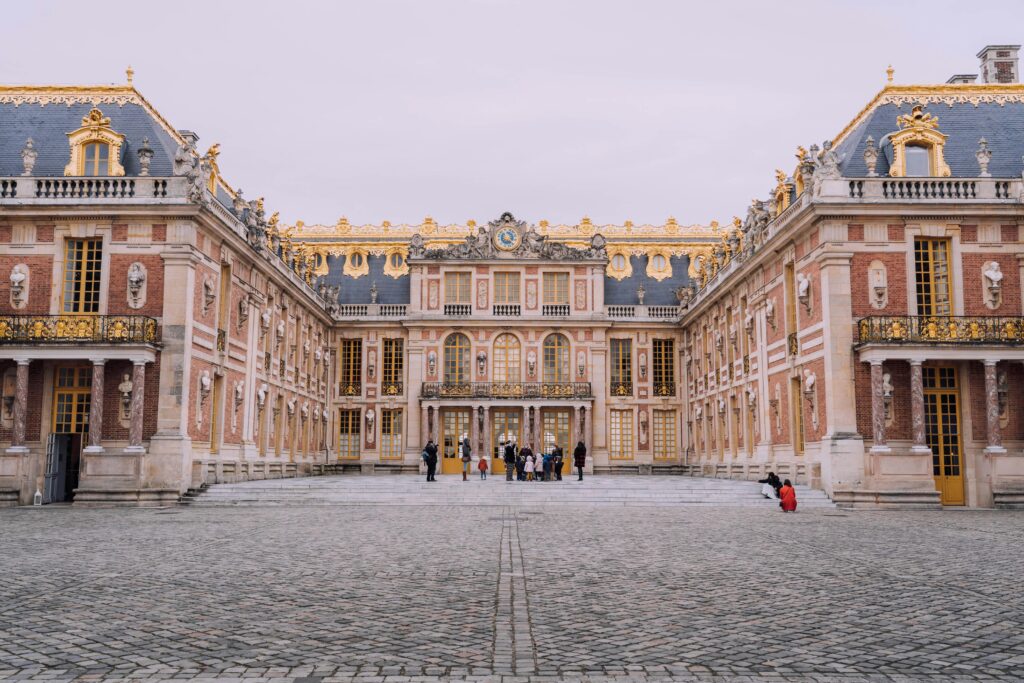
The Palace of Versailles, located just outside Paris, is a masterpiece of French Baroque architecture and a symbol of the absolute monarchy that defined 17th and 18th-century France. Built under the reign of King Louis XIV, the palace began as a hunting lodge and was expanded into a grand royal residence surrounded by meticulously landscaped gardens. Versailles is renowned for its opulent Hall of Mirrors, where the Treaty of Versailles was signed in 1919, marking the end of World War I. The palace also features the luxurious Royal Apartments, adorned with elaborate frescoes and gilded detailing, and the sprawling Gardens of Versailles, which are among the most famous in the world, complete with fountains, sculptures, and manicured lawns. Today, Versailles stands as a testament to the grandeur and excesses of the French monarchy and attracts millions of visitors annually who come to marvel at its splendor and historical significance.
Historical Context:
Constructed in the late 17th century under the patronage of King Louis XIV, the Palace of Versailles stands as a quintessential example of absolute monarchy and the grandeur of French classical architecture. Intended originally as a hunting lodge, Louis XIV transformed Versailles into a monumental palace that symbolized the power and authority of the French monarchy. The palace’s architecture, characterized by its symmetrical layout, ornate facades, and formal gardens, reflects the ideals of order, harmony, and control espoused by Louis XIV’s court. Versailles became the center of political power in France, where the king held court and conducted affairs of state, solidifying its status as a symbol of royal authority and the pinnacle of French architectural achievement during the Baroque period.
Highlights:
The Palace of Versailles is renowned for its spectacular highlights, including the opulent Hall of Mirrors, a magnificent gallery lined with 17 mirrored arches that reflect the gardens through 17 windows overlooking the palace grounds. The King’s and Queen’s Royal Apartments showcase lavish interiors adorned with exquisite frescoes, gilded moldings, and elegant furnishings, providing a glimpse into the luxurious lifestyle of the French monarchy. Surrounding the palace, the meticulously landscaped Gardens of Versailles feature ornate fountains, sculptures, and perfectly manicured lawns, offering visitors a serene escape into nature’s beauty and exemplifying the grandeur of French landscape design during the 17th century. Together, these attractions make Versailles a symbol of both the artistic achievements and the political power of the French monarchy.
Visitor Information:
To fully appreciate the Palace of Versailles, it’s advisable to join a guided tour, which offers in-depth insights into the history and significance of this magnificent royal residence. To avoid the peak tourist rush, it’s best to plan your visit early in the day. Versailles offers various ticket options, including combination tickets that allow access to both the palace and its expansive gardens, ensuring visitors can explore both the opulent interiors and the stunning outdoor landscapes at their leisure. Planning ahead and considering these options can enhance the experience of exploring one of France’s most iconic historical landmarks.
Sainte-Chapelle
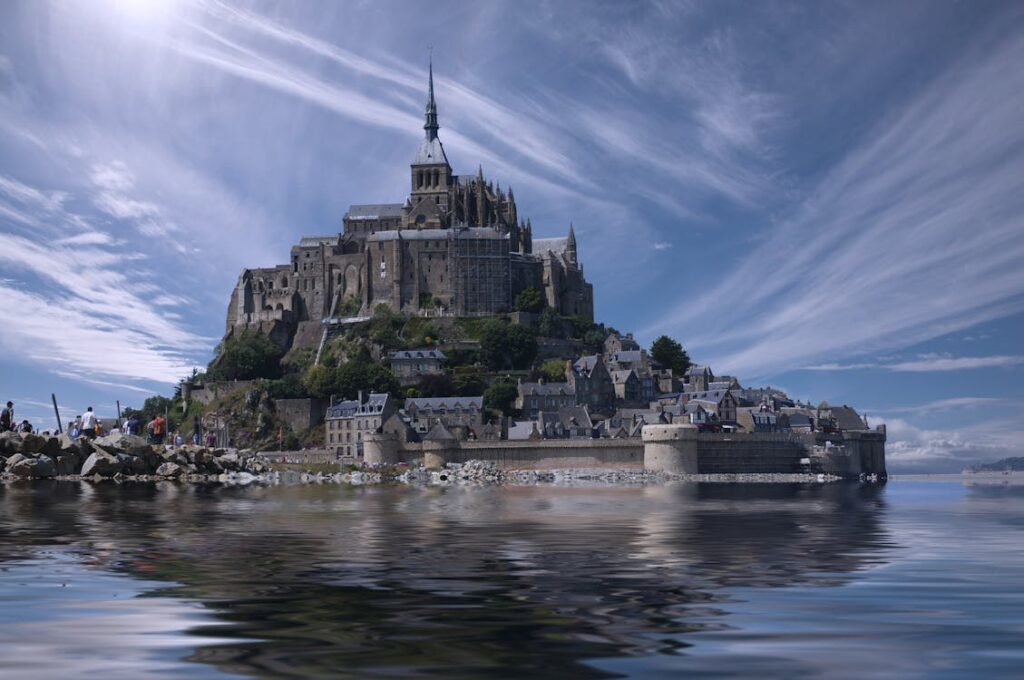
Sainte-Chapelle, located within the medieval Palais de la Cité on the Île de la Cité in the heart of Paris, is a jewel of Gothic architecture and a testament to the medieval artistry of France. Built in the mid-13th century by King Louis IX, also known as Saint Louis, Sainte-Chapelle was constructed to house relics of Christ’s Passion, including the Crown of Thorns. The chapel is renowned for its breathtaking stained glass windows, which depict intricate scenes from the Bible and radiate with vivid color when sunlight streams through. The upper chapel, reserved for the king and his close associates, is particularly stunning, with its soaring height and delicate stonework. Today, Sainte-Chapelle remains a significant cultural and architectural landmark, attracting visitors from around the world who come to admire its beauty and historical importance.
Historical Significance:
Built in 1248 by King Louis IX, Sainte-Chapelle holds immense historical significance as a masterpiece of Gothic architecture and a testament to medieval devotion. Commissioned to house relics of Christ’s Passion, including the revered Crown of Thorns, the chapel was intended as a royal chapel for the king and his court to venerate these sacred artifacts. The construction of Sainte-Chapelle was a bold statement of Louis IX’s piety and his desire to create a magnificent space to house relics of profound religious importance. The chapel’s exquisite stained glass windows, depicting biblical scenes and the Passion of Christ, are among the most stunning examples of medieval stained glass craftsmanship. Today, Sainte-Chapelle remains a cherished historical and cultural landmark in Paris, attracting visitors from around the world who come to admire its architectural beauty and to reflect on its rich religious history.
Architectural Marvels:
Sainte-Chapelle is celebrated for its architectural marvels, most notably its stunning stained glass windows that adorn the chapel’s upper level. These windows, which depict over 1,000 scenes from the Bible, are a masterpiece of medieval stained glass craftsmanship. They flood the interior with vibrant, multicolored light, creating a breathtaking visual experience that enhances the chapel’s spiritual atmosphere. The intricate details and vibrant colors of the stained glass not only tell biblical stories but also symbolize the heavenly light and divine grace that medieval worshippers sought to emulate. Today, the stained glass windows of Sainte-Chapelle continue to awe visitors with their beauty and artistry, making the chapel a must-see for anyone interested in Gothic architecture and medieval religious art.
Tour Tips:
When planning a visit to Sainte-Chapelle, it’s important to note that entry fees apply, and visiting hours may vary, so it’s wise to check ahead before planning your trip. To make the most of your visit, consider combining your time at Sainte-Chapelle with a visit to nearby attractions like the Conciergerie, which is also located on the Île de la Cité. This medieval royal palace turned prison is historically linked to Sainte-Chapelle and offers additional insights into Parisian history. By combining these visits, you can enrich your experience and gain a deeper understanding of the cultural and historical significance of this unique area in the heart of Paris.
The Pantheon
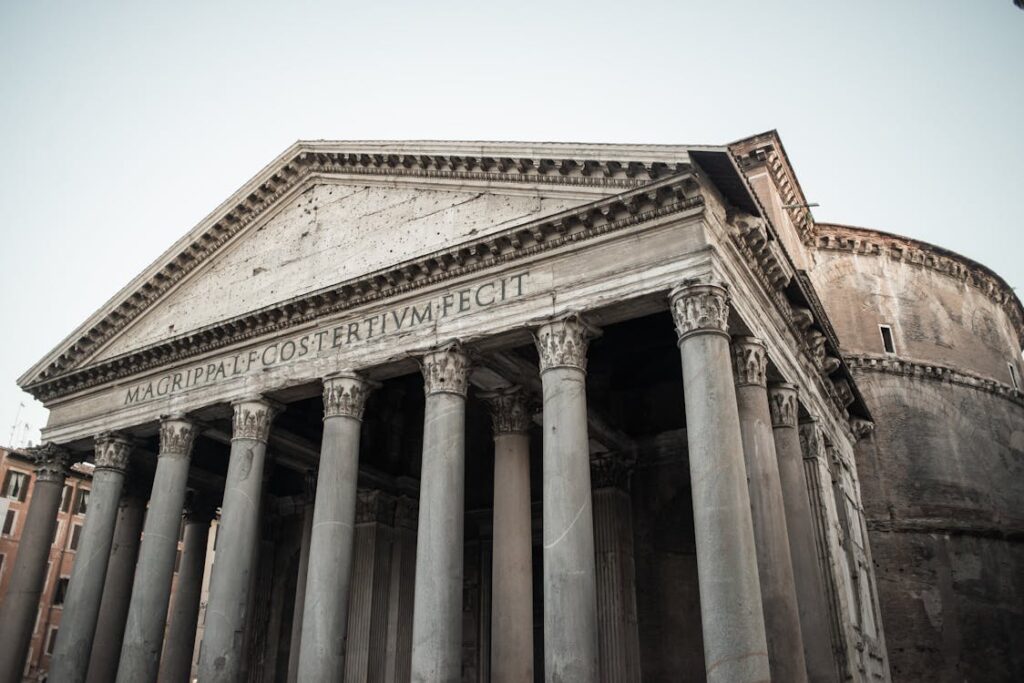
The Pantheon, located in the Latin Quarter of Paris, is a neoclassical mausoleum and a symbol of French national pride. Originally built as a church in the late 18th century, the Pantheon was later repurposed during the French Revolution as a mausoleum to honor the great men and women who have shaped French history. It houses the remains of notable figures such as Voltaire, Rousseau, Victor Hugo, Émile Zola, and Marie Curie, among others. The Pantheon’s imposing neoclassical facade and majestic dome make it a prominent architectural landmark in Paris, while its interior features impressive frescoes and a crypt where visitors can pay their respects to the interred luminaries. Today, the Pantheon serves as a site of reflection on the contributions of individuals to the cultural, scientific, and political life of France, making it a must-visit destination for history enthusiasts and those interested in the intellectual heritage of the nation.
Historical Overview:
Originally constructed as a church in the late 18th century, the Pantheon in Paris underwent a transformation during the French Revolution. It was repurposed as a mausoleum to honor the great men and women who have significantly influenced French history and culture. The Pantheon now houses the remains of notable figures such as Voltaire, Rousseau, Victor Hugo, Émile Zola, and Marie Curie, among others. This neoclassical monument stands as a testament to the ideals of the French Revolution and serves as a symbol of the nation’s intellectual and cultural heritage. The Pantheon’s grand neoclassical architecture and its role as a resting place for France’s revered figures make it a significant site for visitors seeking to understand the intellectual and political history of France.
Key Features:
The Pantheon is distinguished by its grand neoclassical architecture, characterized by a monumental facade and a majestic dome that dominate the skyline of Paris’s Latin Quarter. Inside, visitors can explore the crypt, where the remains of notable French figures such as Voltaire, Rousseau, Victor Hugo, Émile Zola, and Marie Curie are interred, paying homage to their significant contributions to French society. One of the Pantheon’s most famous features is Foucault’s Pendulum, an impressive scientific demonstration that visually illustrates the Earth’s rotation. This pendulum, suspended from the dome of the Pantheon, swings freely and appears to change direction over time, offering a captivating visual representation of an important scientific principle. Together, these features make the Pantheon not only a place of historical significance and cultural reverence but also a site of scientific curiosity and discovery in the heart of Paris.
Visitor Insights:
For those planning a visit to the Pantheon, it’s recommended to check admission details and any special events on the Pantheon’s official website ahead of time. This helps in planning your trip and ensuring that you can experience any unique events or exhibitions during your visit. Guided tours are also available and can greatly enhance your understanding of the Pantheon’s historical significance. Led by knowledgeable guides, these tours offer insights into the architectural features, the lives of the individuals interred within its crypt, and the cultural and political history of France that the Pantheon represents. Whether exploring on your own or with a guide, a visit to the Pantheon provides a profound glimpse into the intellectual and artistic achievements that have shaped France’s cultural heritage.
Montmartre
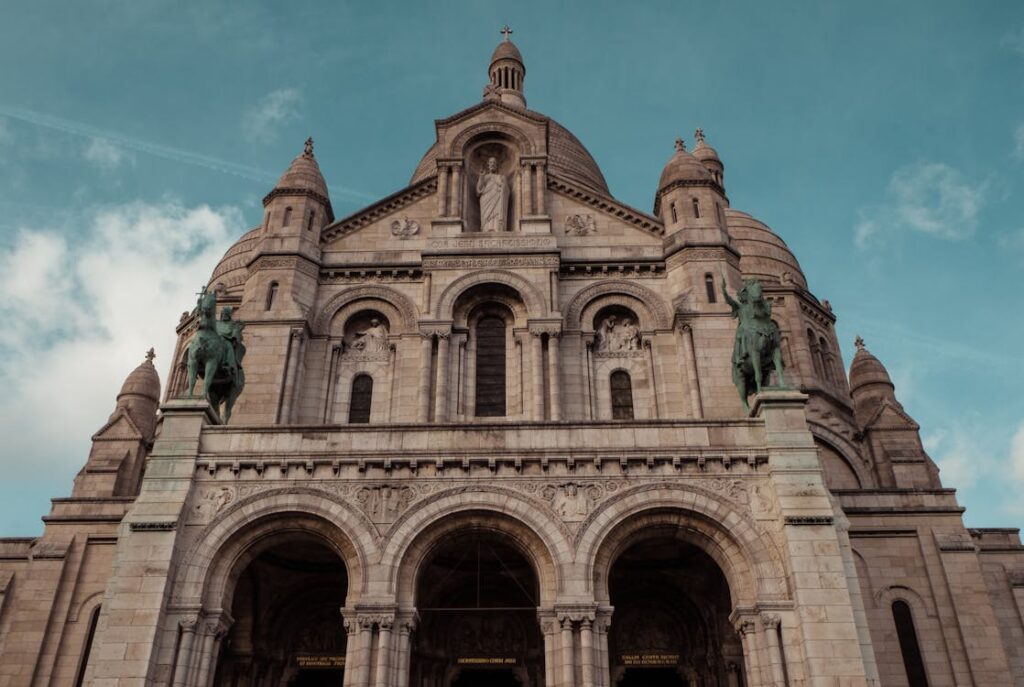
Montmartre, located in the northern part of Paris, is renowned for its artistic history and bohemian atmosphere. This vibrant neighborhood was once home to artists like Pablo Picasso, Vincent van Gogh, and Henri de Toulouse-Lautrec, who were drawn to its winding streets and picturesque views. The main attraction in Montmartre is the stunning Sacré-Cœur Basilica, perched atop the highest point in the city, offering panoramic views of Paris. Other highlights include the lively Place du Tertre, where artists sell their work and tourists can have their portraits sketched, and the Espace Dalí, a museum dedicated to the surrealist artist Salvador Dalí. Montmartre’s charming cafés, historic windmills, and rich artistic history continue to attract visitors seeking to experience the authentic, creative spirit of Paris.
Historical Background:
Montmartre is celebrated for its rich historical background, steeped in artistic heritage and the bohemian lifestyle that flourished during the 19th and early 20th centuries. This neighborhood in the northern part of Paris became a haven for artists seeking inspiration and freedom, drawn to its winding cobblestone streets, scenic views, and vibrant culture. Artists like Pablo Picasso, Vincent van Gogh, and Henri de Toulouse-Lautrec made Montmartre their home, finding inspiration in its unique charm and creative energy. The neighborhood’s cafés, cabarets, and art studios fostered a community where artists could experiment with new styles and ideas, contributing to the vibrant artistic movements of the time. Today, Montmartre’s artistic legacy continues to thrive, attracting visitors from around the world who come to experience its bohemian spirit and explore its historical streets and landmarks.
Main Attractions:
Montmartre offers a plethora of notable attractions that draw visitors from all corners of the globe. At the summit of the neighborhood stands the iconic Sacré-Cœur Basilica, a stunning example of Romano-Byzantine architecture that offers panoramic views of Paris. Nearby, the bustling Place du Tertre is famous for its artists who set up easels to paint portraits and sell their works, creating a lively atmosphere reminiscent of the area’s artistic heyday. For art enthusiasts, the Espace Dalí museum provides a deeper insight into the works and life of Salvador Dalí, showcasing a collection of the surrealist artist’s sculptures and drawings. These attractions, along with Montmartre’s historic windmills, charming cafés, and picturesque streets, make it a must-visit destination for those seeking to experience the artistic and cultural heart of Paris.
Tour Recommendations:
For those visiting Montmartre, walking tours are highly recommended to immerse yourself in the area’s rich history and charm. These tours offer an intimate glimpse into the neighborhood’s artistic heritage and bohemian past, taking you along its winding streets and past historic landmarks. One highlight not to be missed is the panoramic view of Paris from the steps of the Sacré-Cœur Basilica, where you can enjoy breathtaking vistas of the city below. These tours often include stops at the bustling Place du Tertre, where artists showcase their work, and the Espace Dalí museum, providing a comprehensive exploration of Montmartre’s artistic legacy. Whether you’re interested in art, history, or simply soaking up the unique atmosphere of this historic neighborhood, a walking tour of Montmartre is sure to enrich your visit to Paris.
Here you can learn about Historical Tours in Normandy
Conclusion
Exploring the historical sites of Paris offers a profound appreciation for the city’s rich heritage and cultural legacy. Each landmark, from Notre-Dame Cathedral to the Louvre Museum, and from the Palace of Versailles to Montmartre, tells a unique story that contributes to the vibrant tapestry that makes Paris a timeless destination. These sites not only showcase exquisite architecture and artistry but also reflect the city’s evolution through centuries of history. For those planning a historical tour, visiting these highlights promises to uncover hidden gems and provide a deeper understanding of Paris’s enduring allure as a center of art, culture, and history. Whether exploring iconic monuments or wandering through charming neighborhoods, Paris offers a wealth of experiences that captivate and inspire visitors from around the world.
